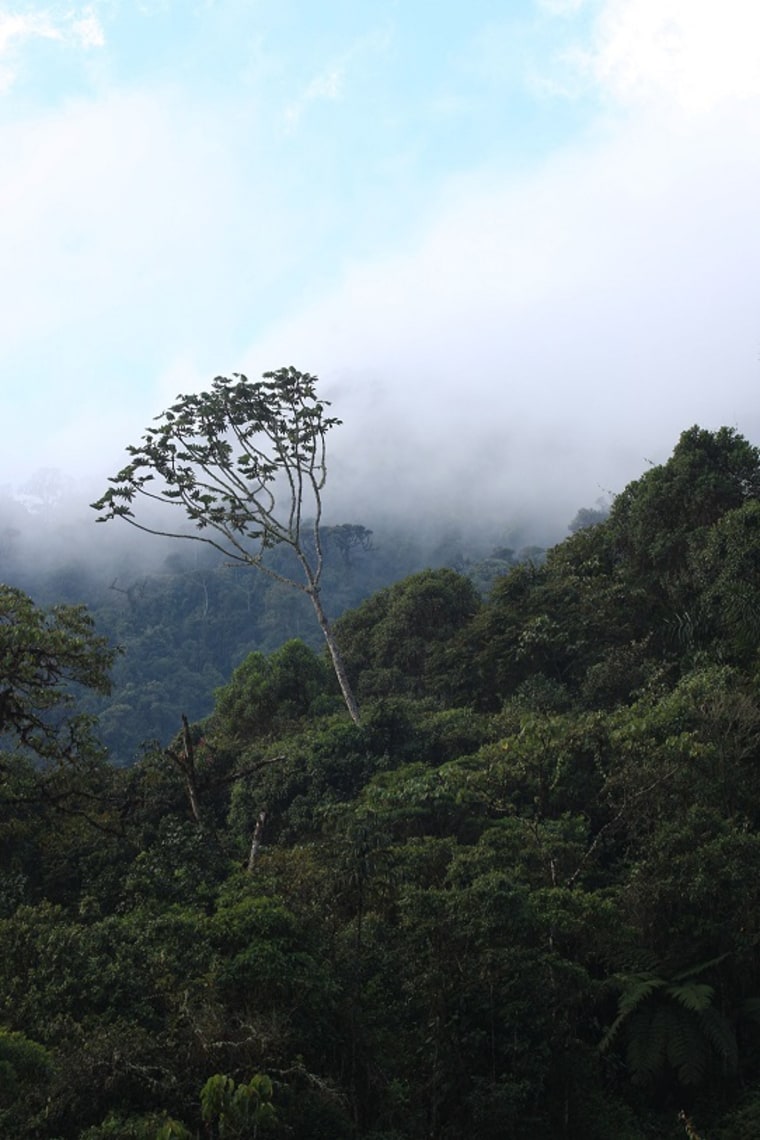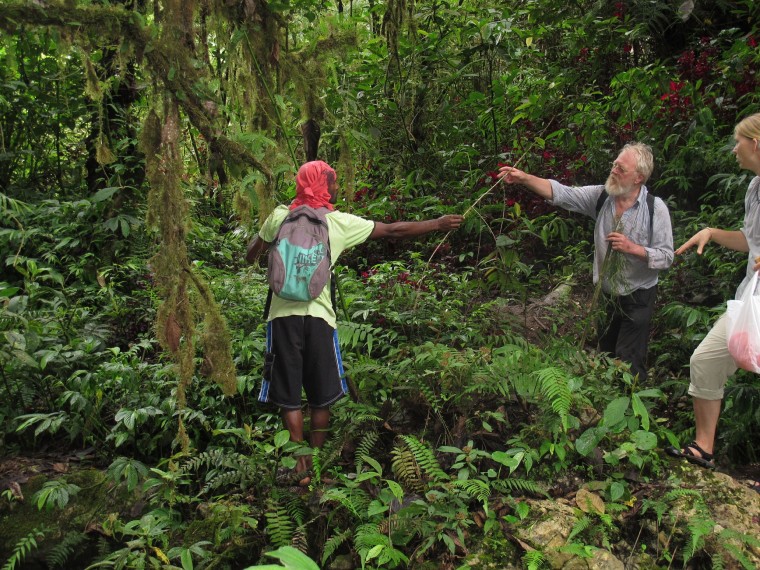Nearly two thirds of the world's plant species — and the creatures and critters that depend on them for survival — can be saved by protecting patches of land, from the cloud forests of South America to islands in the Caribbean, Asia and Africa, according to a new study.
The finding is based on analysis of data on the distribution of more than 110,000 plant species, and is an effort to determine if internationally agreed conservation targets of protecting 17 percent of the Earth's land area and 60 percent of its plants by 2020 are achievable.
"The answer is yes we can achieve it, but we are going to have to be pretty smart and energetic about protecting the right places," Stuart Pimm, a conservation ecologist at Duke University in Durham, N.C., and study co-author, told NBC News.
He and colleagues at Microsoft Research's Computational Science Laboratory in Cambridge, U.K., and North Carolina State University write Thursday in the journal Science that current conservation efforts are biased "toward lands that are high, cold, dry, or otherwise far from people — often a mismatch with where conservation needs are pressing."
Pimm noted that the conservation targets in the Convention on Biological Diversity "are arbitrary … but nonetheless they are targets (set) by thoughtful people." His team set out to determine if the targets can be met.

The researchers used a computer program to crunch data assembled by the Royal Botanic Gardens in Kew, England, on the plant species in order to identify species-rich regions that offer the "biggest bang for the buck," Pimm explained.
These so-called biodiversity hotspots include tropical and subtropical islands around the world, as well as parts of Central and South America, which are full of plants that have limited geographic ranges — known as endemic species.
The hotspot approach to biodiversity conservation was pioneered two decades earlier by Pimm's colleague and friend Norman Myers, a British ecologist affiliated with Duke University. The new research updates the earlier work with the advantage of improved data and computer processing, Pimm said.
The latest findings highlight some regions of the world Myers missed, such as the cloud forests in the northern Andes of South America, thus guiding conservationists to a region where they can focus new efforts to achieve the conservation goals.
The major conclusion of the paper — more land needs to be saved, particularly in places rich in endemic species such as Madagascar and the cloud forests — are sound, according to Gerardo Ceballos, a leading ecologist at the National Autonomous University of Mexico.
One caveat, he explained in an email to NBC News, is that "most places on Earth are relevant for conservation of some sets of species, meaning that a large percentage of the land mass is required to protect all biological diversity."
And given the importance of biodiversity to clean air and water as well as fertile soils, so-called ecosystem services that are vital for humans, "we must be extremely careful in reaching the conclusion that protecting in nature reserves 17 percent of the land mass on Earth will suffice," Ceballos said.
"The more we protect, the better," he explained. "And … because of the distribution of biodiversity and ecosystem services, we need to make an effort to manage areas outside (of) reserves. To me, one of the most important challenges we face is to couple conservation with development."
In addition to Pimm, co-authors of the new study in Science include Lucas Joppa and Piero Visconti at Microsoft Research's Computational Science Laboratory and Clinton Jenkins at North Carolina State University.
John Roach is a contributing writer for NBC News. To learn more about him, visit his website.
